Simulations set-up
The simulations start at local noon on 15 July 2006 and last just one time-step. They are located at coordinate 14.0 S and 6.5 E. For further details, see Table 1.
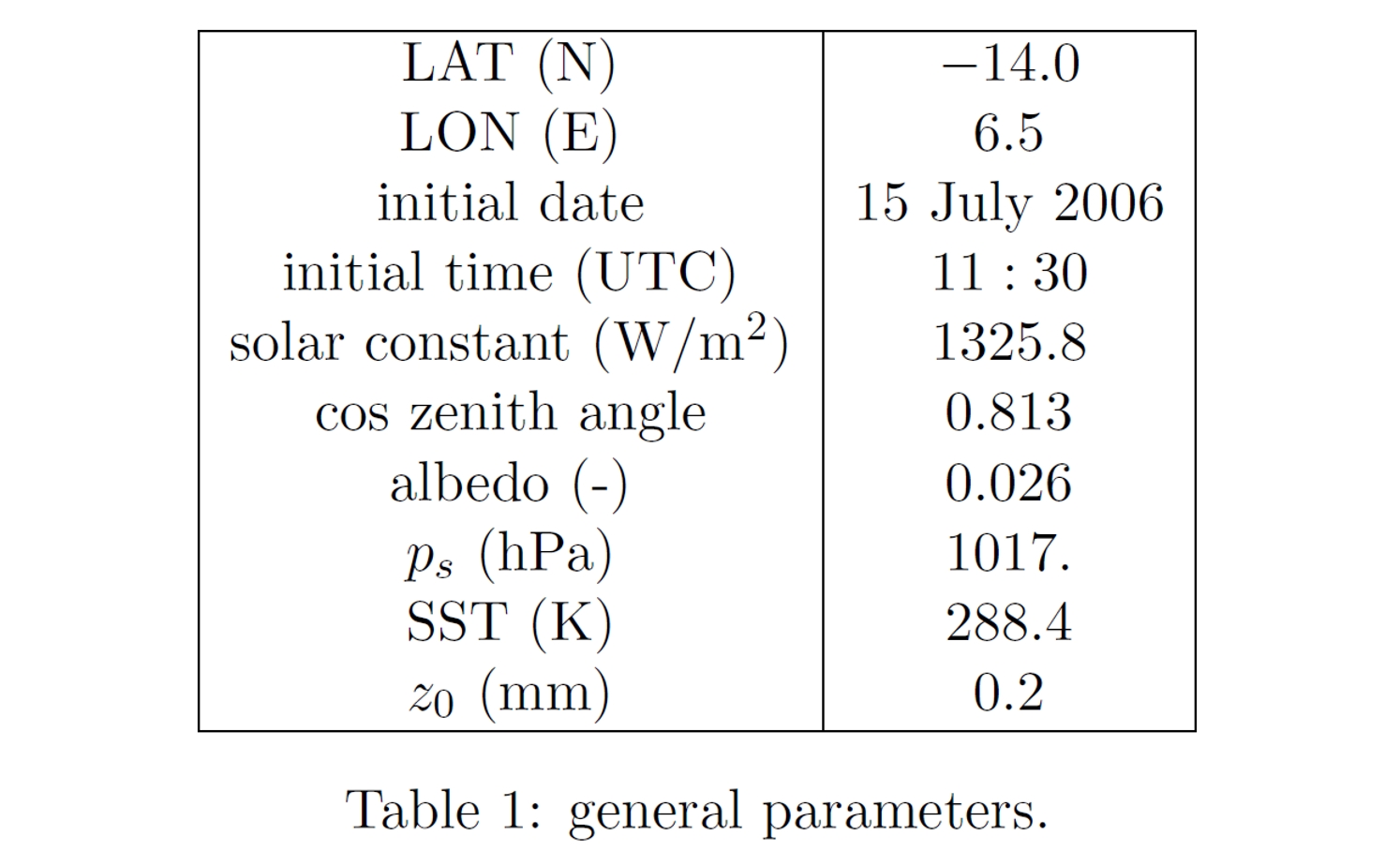
If possible we ask for using the constant greenhouse gases concentrations provided in Table 2 (since the ozone concentration is height dependent, it is contained in the NetCDF file).
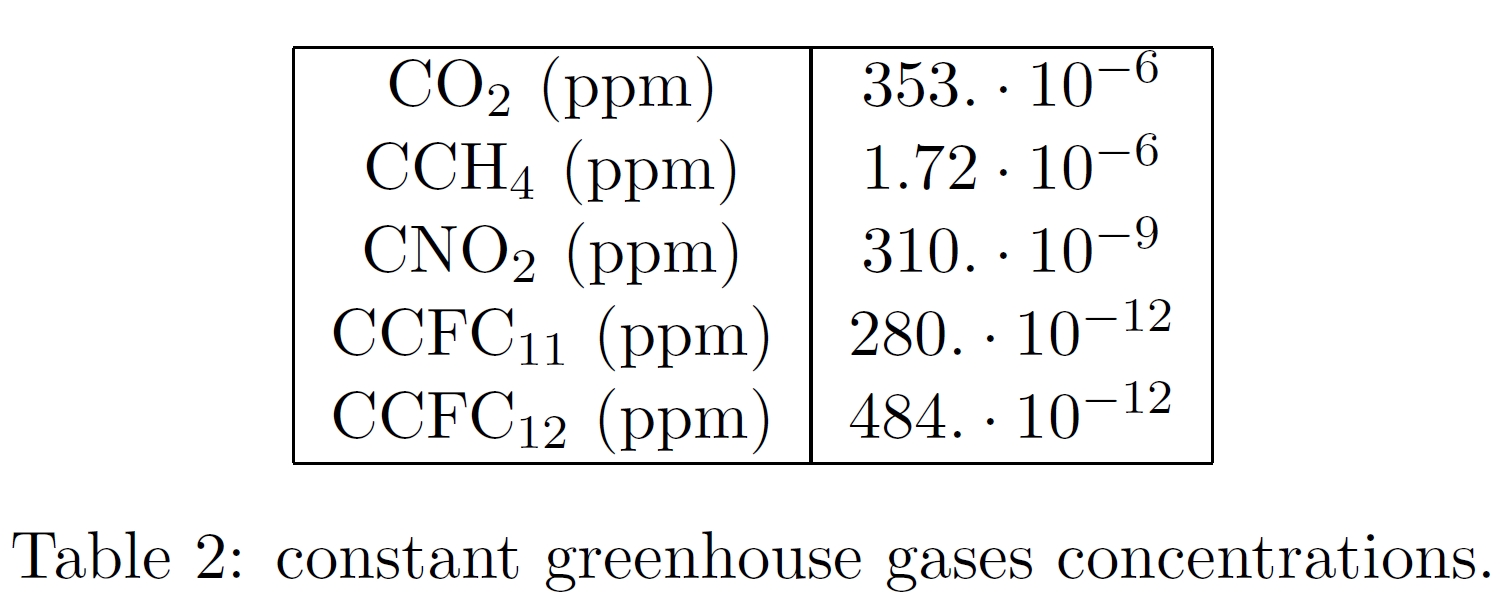
All the necessary informations are collected in the NetCDF file radiationtest_input.nc.
Initial conditions
The initial profiles are based on standard atmosphere characteristics and on observations.
Boundary Layer: 0. < z < 600. m
In order to obtain different amounts of liquid water path (LWP), the liquid water equivalent potential temperature, θl, has been
maintained constant while for the total water content, qt, a value belonging to the following set has been chosen:
θl = 287.5 K
qt = (8.00; 8.50; 8.57; 8.64;8.71; 8.78; 8.85;
8.92; 8.99; 9.06; 9.40; 9.17; 9.30; 9.43;
9.56; 9.69; 9.82; 9.95) g/kg
The first profile corresponds to the clear sky case while the others correspond to a stratocumulus clouds topped boundary layers with
increasing LWP.
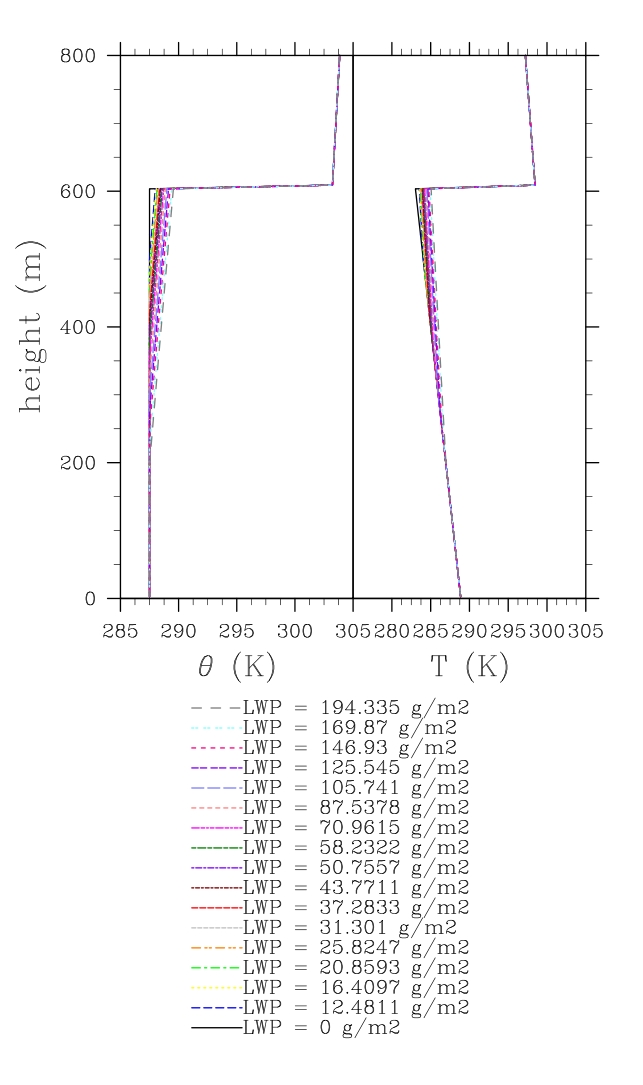
Figure 3: profiles of potential temperature (on the left) and temperature (on the right) in the boundary layer.
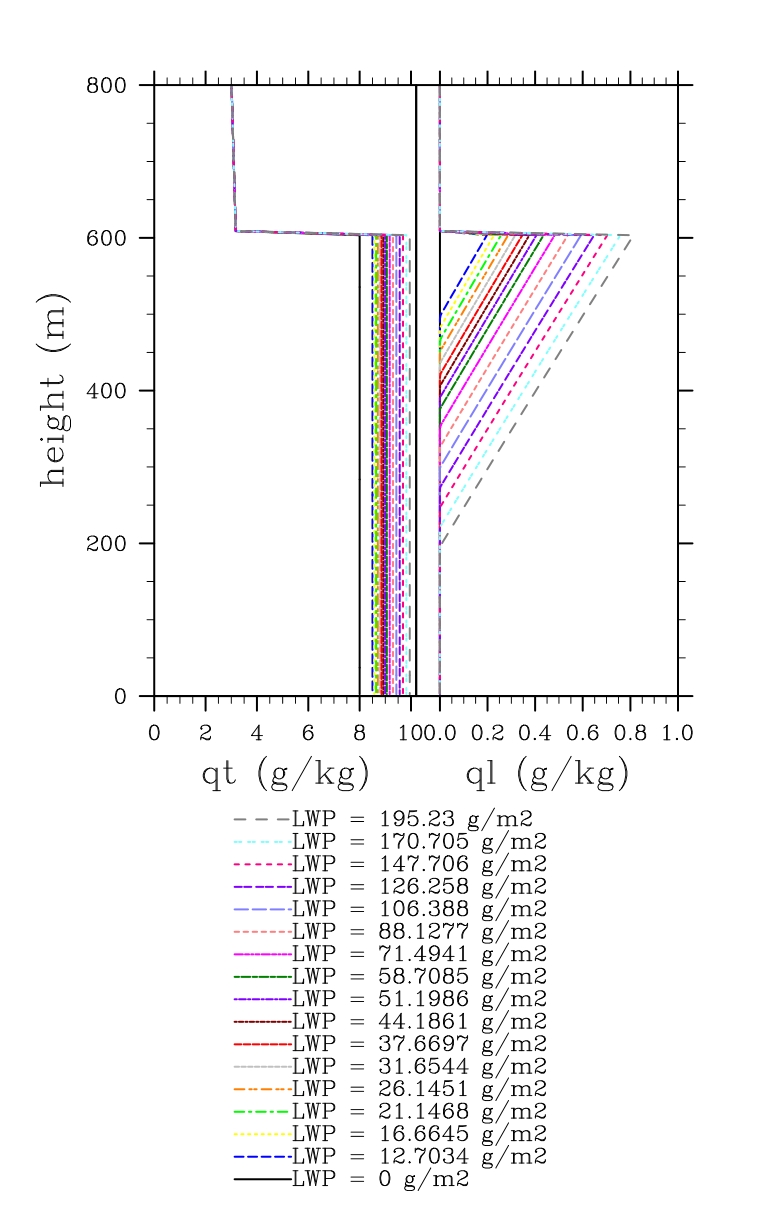
Figure 4: profiles of total water content (on the left) and liquid water content (on the right) in the boundary layer
Free Tropophere: 600. < z < 16250. m
T = (-6.55946 K/km) z + (302.455 K)
RH = 0.15
Tropopause: 16250. < z < 24700. m
T = (3.40457 K/km) z + (138.474 K)
qt = 0. g/kg
Stratosphere:
qt = 0. g/kg
- 24700. < z < 30650. m: T = 222.5 K
- z > 30650. m: T = (- 1. K/km) z + (253.32 K)
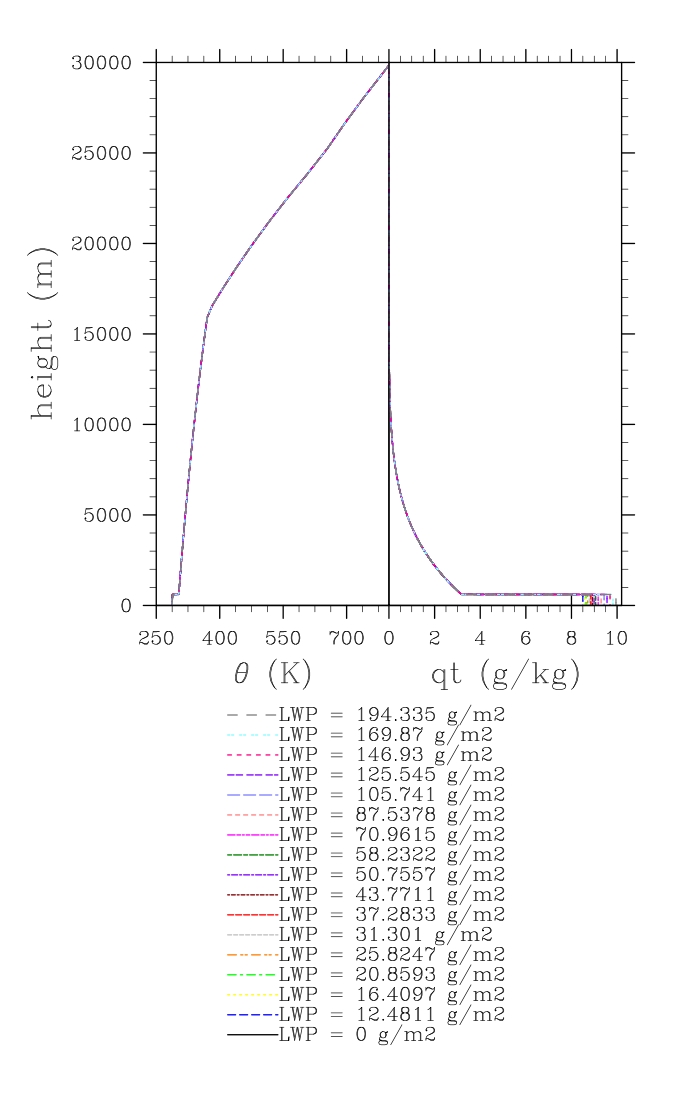
Figure 5: profiles of potential temperature (on the left) and total water content (on the right) up to the top of the atmosphere.
Microphysics
c, varies with height as follows:

a is the air density, ρl the liquid water density and ql the liquid water content.With these assumptions the optical depth, τ , reads as

c = 200. cm-3. Along with the previous assumptions of non-dispersive delta-peaked distribution of the cloud droplet size distribution and no inhomogeneity for the liquid water content, this leads to an effective radius which is height dependent


- SET A: operational set-up;
- SET B: prescribed effective radius: r
e= 9 μm; - SET C: constant cloud droplet number concentration: N
c= 200. cm-3.
Vertical resolution
- the standard resolution such as used in the operational runs;
- a higher prescribed resolution.
p
k+1/2 = Ak+1/2 + Bk+1/2 ps where p
s is the prescribed surface pressure. The A's and B's are provided in the NetCDF file radiationtest_input.nc.
Radiation codes that run in LES models should run at a vertical resolution of 10 m in the lowest 1 kilometer. Beyond this height the resolution can be made coarser through the use of a stretched grid.